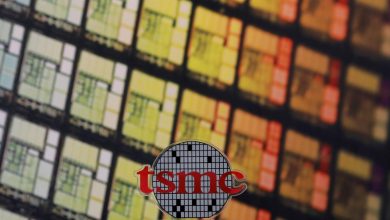Intel ‘stumbled,’ chief executive says; shares drop as loss forecast

Pat Gelsinger, Intel.
Supplied
Intel said it expects to lose money in the current quarter, surprising investors with a bleaker-than-expected outlook for both the PC market and slowing growth in its key data centre division.
The company’s shares fell 9.5 per cent in trading after the bell.
“We stumbled, right, we lost share, we lost momentum,” Intel chief executive Pat Gelsinger said.
“We think that stabilises this year,” Gelsinger told investors.
He said Intel has been losing market share in the data centre market, a nod at the strength of rival Advanced Micro Devices
Two of Intel’s most important markets are showing weakness after two years of strong growth as remote work boomed during the pandemic.
Now, the PC industry is struggling with a glut of chips after demand for consumer electronics fell off a cliff and business customers wary of a recession are slowing spending on data centres.
Gelsinger told Reuters that customers also were emptying inventory.
“We expect some of the largest inventory corrections literally that we’ve ever seen in the industry taking place that’s affecting the Q1 guide in a meaningful way,” he said.
“Everything hinges on the PC market recovery,” Wayne Lam, an analyst at CCS Insight said.
“AMD isn’t immune to this either,” he said.
“Don’t think we’ve seen the bottom for INTC…They are not running a sustainable business model,” Lam added.
Intel expects profit margins to fall further after dropping from 58.4 per cent in the fourth quarter of 2020 to 43.8 per cent in the fourth quarter of 2022.
“Its safe to say that ambitions to return to a 60 per cent margin in the future is light years away,” said CFRA Research analyst Angelo Zino.
Intel reiterated its medium-term goal of 51-53 per cent gross margin, and 54-58 per cent longer term.
Shares of other microchip companies fell as well, with AMD down 2.6 per cent and Nvidia Corp down 2 per cent.
PC shipments fell 16.5 per cent to 292.3 million units in 2022, per data from research firm IDC, forcing chipmakers to cut back production and slash revenue forecasts.
Shrinking PC demand also pressured Microsoft More Personal Computing segment, which includes Windows, devices and search revenue, leading to a 19 per cent drop in the segment in its second quarter.
Meanwhile, the data centre market has also slowed from double-digit growth as businesses cut costs to ride out an economic slowdown.
After Gelsinger returned to the company nearly two years ago, Intel has focused on regaining the lead in chipmaking technology.
Outsourcing the chipmaking process has helped rivals like AMD make much smaller and faster chips and outpace Intel’s technology.
The company forecast first-quarter revenue in the range of about US$10.5 billion to US$11.5 billion.
Analysts on average were expecting total revenue of US$13.93 billion, according to Refinitiv data.
The company expects an adjusted loss of 15 cents per share versus expectations of a 24 cents per share profit.
Revenue in the fourth quarter fell 32 per cent to US$14 billion. Analysts on average expected revenue of US$14.46 billion.
According to the news on Connecting Aotearoa New Zealand’s Channel




